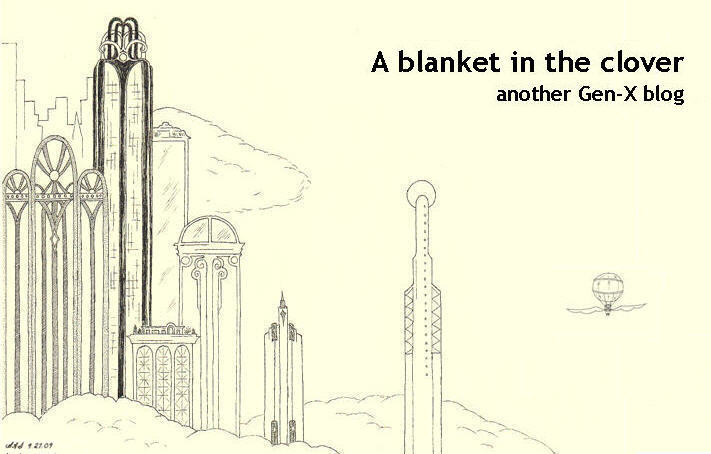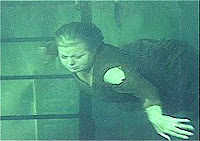After learning that the movie has quite a high fresh rating, I decided to check it out. I knew virtually nothing about it except that, according to one Rotten Tomatoes snippet, it offers a grim but uplifting portrait of a poor black girl.
Two hours later: Wow. What a movie. Directed by Lee Daniels, it's at times terrifying, often disturbing, and ultimately, pretty reassuring. If you can stomach upsetting pictures of domestic violence, I highly recommend it.
Set in Harlem, the story follows Claireece (Gabourey Sidibe), or Precious, an obese, dark-skinned 16-year-old who looks in the mirror and imagines that she's a slim white girl. She lives in poverty with a chain-smoking mother, Mary (Mo'Nique), who occasionally emerges from a TV-watching lethargy to beat Precious, berate her, and throw things at her. As the movie opens, we learn that Precious is pregnant with her second child by her own father, who has repeatedly raped her. This fact seems to incite particular violence in Mary, who sees Precious as a conniving other woman. Precious is suspended from school, but a concerned administrator persuades her to enroll in an alternative school.
This alternative school is where Precious finds solid ground. Here, she meets Blu Rain (Paula Patton), a beautiful English teacher who exudes serenity and, among other things, teaches Precious to read (starting with an idyllic-sounding story, "A Day at the Shore"). The other girls in the class are not 100% welcoming at first, but they evolve into a family of sorts. As the story progresses, other comforting faces show up in the form of a nurse's aide (Lenny Kravitz), a tough but kind social worker (an unrecognizable, very good Mariah Carey), and the school's secretary (Sherri Shepherd).
At times the movie's happy scenes seem a bit pat, but overall the film succeeds, largely because of its strong performances and its uncompromising portrayal of the place that Precious comes from. "Precious" features scenes as scary as any I've seen on film — the movie is truly not for the faint of heart. But you have to respect a story that's willing to go in some of the places this one does. For me, a lot of credit goes to screenwriter Geoffrey Fletcher and to Sidibe. Sidibe plays Precious with a gravel-voiced, unlikely strength, one infused with occasional lines of ragged poetry ("The other day I cried," she says in a voice over. "I felt stupid. But you know what? Fuck that day. That's why God or whoever makes new days.")
After watching the film, I learned a little more about the book and was slightly disappointed to learn that it wasn't penned by a "Precious" figure. I say this because there is a scene in the film, a slightly heavy-handed one, where Miss Rain vigorously urges Precious to write about her problems. I wondered whether such instruction led a real-life troubled student to create this story. Rather, the author, Sapphire, apparently was a teacher — more of a Blu Rain — who knew girls like Precious.
Whatever the source of the story, it is one that stays with you. It was heavily on my mind for some time after I watched it, especially that afternoon. When I came out of the theater, I walked for a while, then ducked out of the cold into the Finagle-A-Bagel outside Copley Square. It was only 5 p.m. but already dark outside. Perched at an upstairs window, I had a nice view of the Hancock tower and everything in its wake: the lights of the square, freshly decorated for the holidays, the crowded sidewalks, and the headlights inching along Boylston Street.
Gazing at this scene, I found myself wondering about the mood of the whole city just at that moment. I wondered: if right now I knew the mind of every single person in Boston, how much happiness would I see? How many people would be in perfect comfort, perhaps looking forward to a privileged evening — an early holiday party, or a date with an adoring partner? How many would be scared? How many disheartened? How many drifting along numbly? I guess it's not unusual to wonder things like that, but "Precious" especially made my mind move in that direction. I pass so many people in the city about whom I'll never know anything. How many nurse anguish like that of Precious? How many will find their way out? At the risk of sounding cheesy, I hope that this movie helps, by reminding people to treat others with compassion.















































